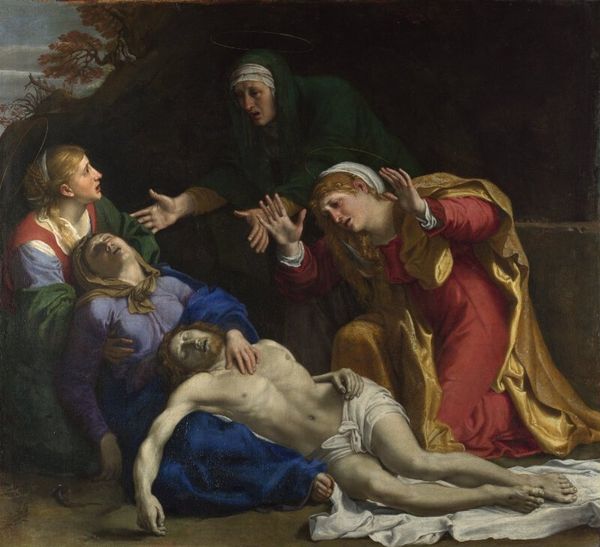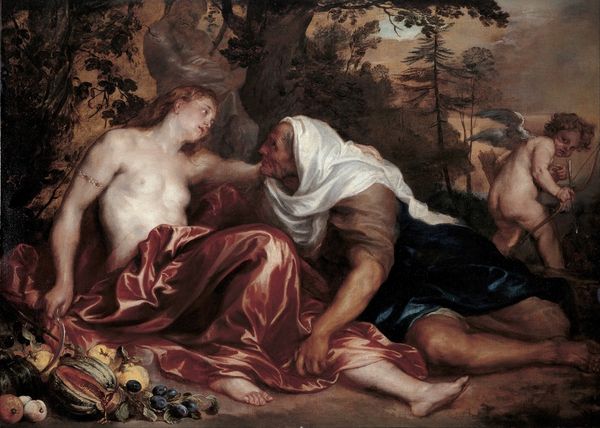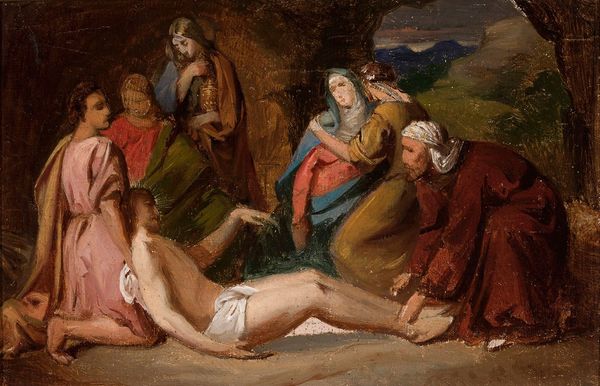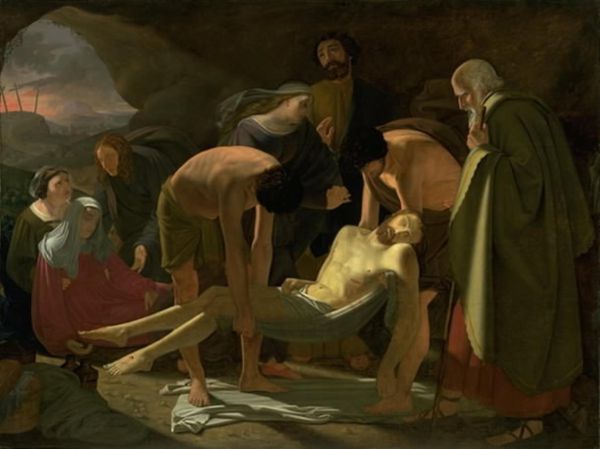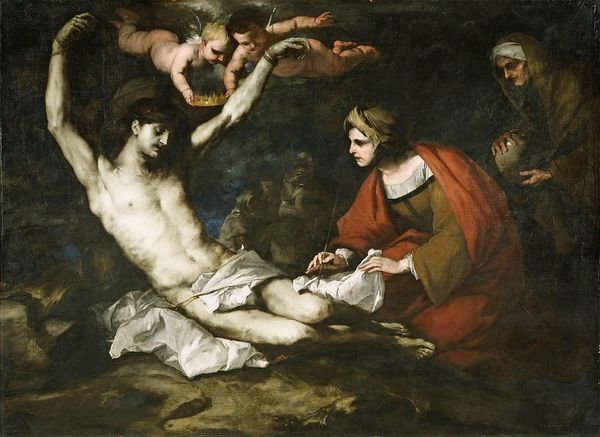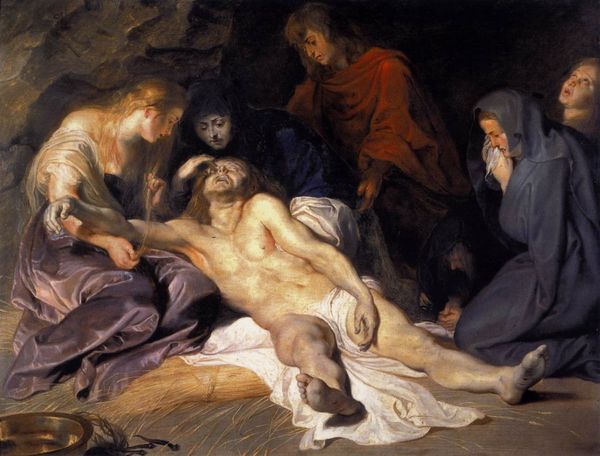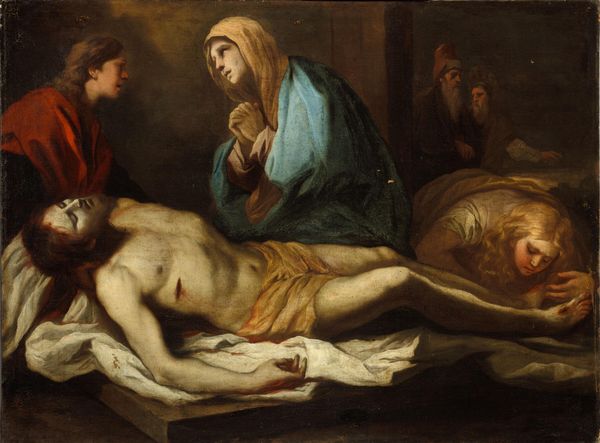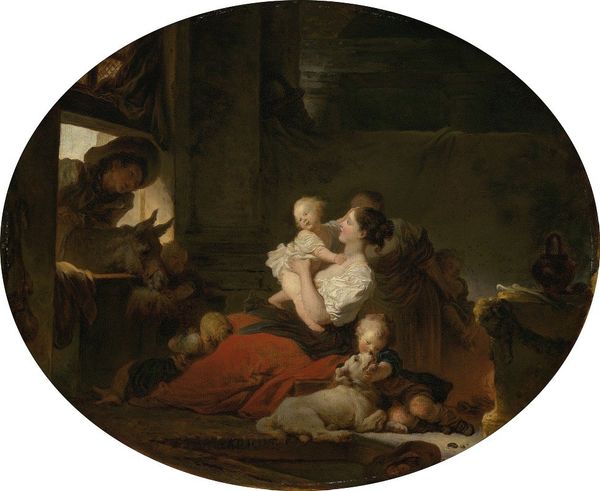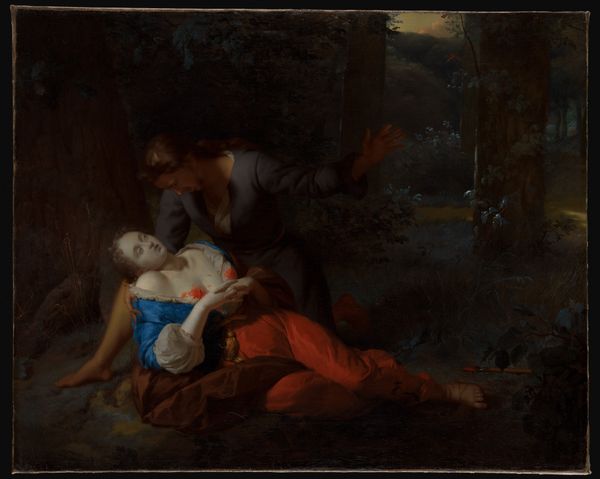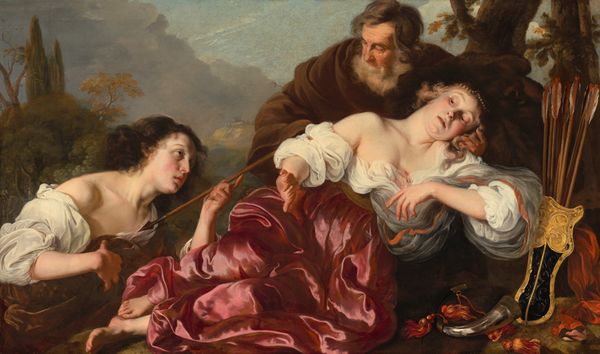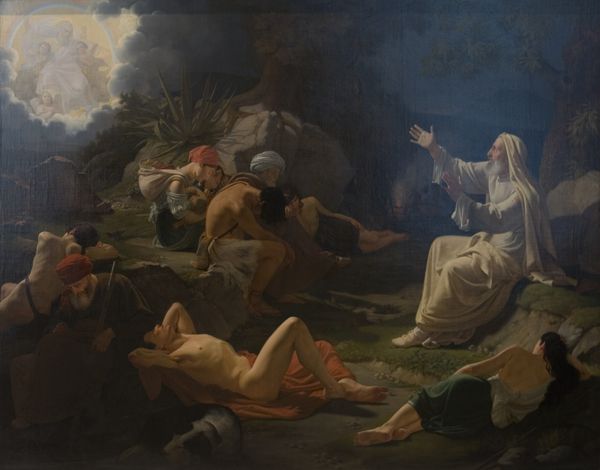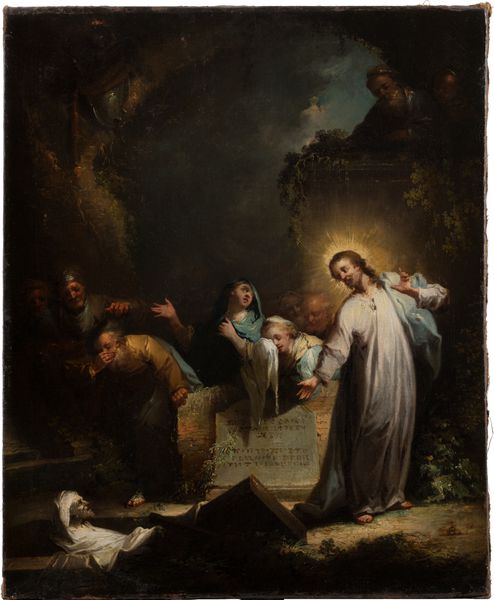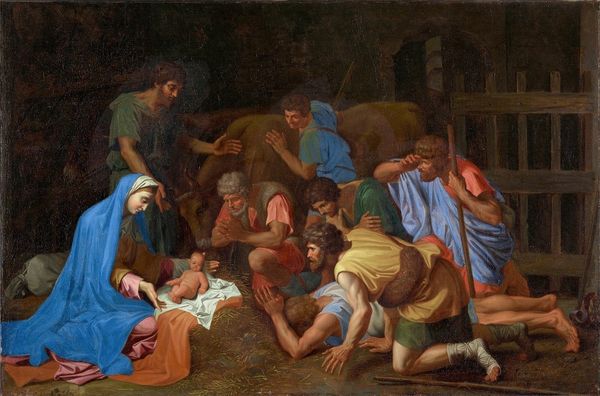
#
gouache
#
charcoal drawing
#
possibly oil pastel
#
oil painting
#
underpainting
#
pastel chalk drawing
#
painting painterly
#
watercolour bleed
#
watercolour illustration
#
watercolor
Copyright: Public Domain: Artvee
Curator: Peter Paul Rubens's oil on canvas, "The Lamentation over the Dead Christ," painted in 1614, presents a poignant scene. What are your initial thoughts? Editor: The weight of grief is palpable. There’s a stillness, but also an unsettling theatricality to the composition, as though the mourners are arranged for maximum emotional impact. Curator: Indeed. Rubens masterfully uses chiaroscuro to intensify the emotional impact. The light emphasizes Christ's pale body against the somber tones surrounding him. It’s a clear visual strategy common in Baroque art. Editor: But what's intriguing is how Rubens is depicting this grief, particularly that of the women. Is it authentic mourning, or is there a performative aspect dictated by the male gaze, influenced by social expectations placed upon women? Curator: That's a valid point. In the context of 17th-century patronage, works like this commissioned by the Church served specific purposes: to evoke piety, to reinforce the faith of believers, but to examine the gender politics... Editor: We can’t ignore the societal frameworks shaping Rubens's interpretation of the Passion. Who gets to publicly display emotion? What does acceptable mourning look like? Considering his art through the lenses of race, class and gender, which brings nuance to how we perceive the artwork's public reception in a modern society. Curator: Certainly, viewing this with contemporary social awareness reshapes our perspective, especially regarding idealized representations of pain and loss. Editor: Right. Does the composition unwittingly reinforce the historical oppression or misrepresentation of marginalized identities through its artistic license? By analyzing the historical milieu that fostered such work we can reveal powerful insight. Curator: Rubens offers a study of grief but by layering modern readings onto these historically relevant stories, we gain more perspectives of those affected and more equitable points of view. Editor: Exactly, art, and its continued examination allow a path toward not only cultural enlightenment, but justice as well. Curator: An interesting point. Thanks for that perspective.
Comments
No comments
Be the first to comment and join the conversation on the ultimate creative platform.
